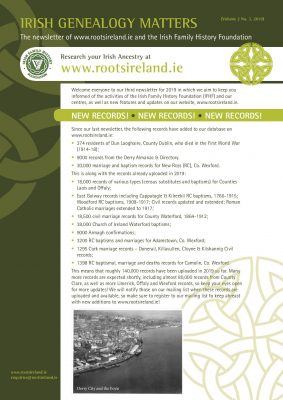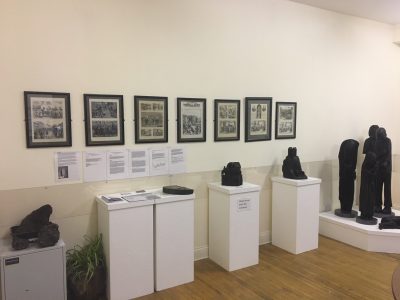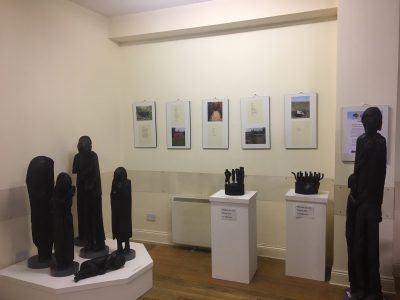Get a 12-month subscription to Roots Ireland at 25% off from 22nd November to 9th December.
To obtain this offer just go to the following link and login using your existing RootsIreland login details: http://www.rootsireland.ie. If you currently have a subscription, click My Account, My Subscription and Start a New Subscription. The special deal subscription will then begin once your current subscription runs out.
Why take out a subscription with RootsIreland?
- RootsIreland have the most complete and most accurate set of Roman Catholic church records online. Our index is easily searchable and has features such as standardised surname and forename searches which make your searches even more user-friendly.
- We hold over 22 million records which is being added to continually. In 2019, we have added to our database almost 220,000 records, including 74,000 records from County Clare, as well as other records from Laois, Offaly, East Galway, Wexford, Armagh, Derry and Waterford, including the parish of New Ross, Wexford, where President John F. Kennedy’s family came from.
- Together, our 34 genealogy centres have an unparalleled amount of local knowledge which can be invaluable to those tracing their ancestors, a service which no other website or company can provide to such a high standard. By taking out a subscription with RootsIreland, you are helping these centres to continue to provide a world-class service and securing many Irish jobs.
If you have any questions please check our Help section and if this does not provide an answer, then you may contact us or one of the county centres.
*Offer applies from 22nd November to 12 midnight Irish time on 9th December 2019 only. Cannot be used in conjunction with any other offer.




